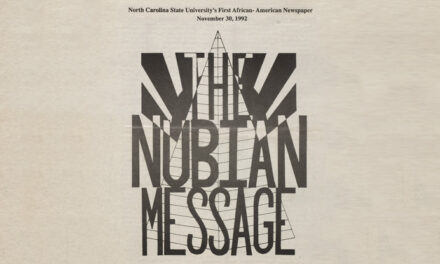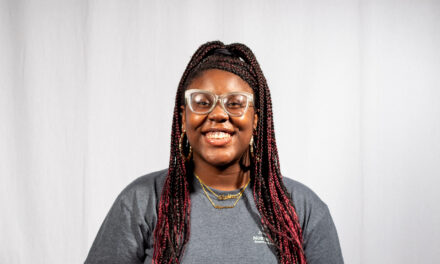Preston Keith | Guest Columnist
Institutions of higher education often cite diversity and inclusion as a central component of their mission. Students are asked to bring their whole selves in the hopes of building community, furthering dialogue, and celebrating the diverse identities present. Oftentimes, diversity is only seen from a singular perspective and focuses on one aspect of a person’s identity. If we are truly to create equitable spaces on college campuses and support the whole student, then we must recognize that people carry multiple identities, each shaping the way they navigate and move through this world.
I am reminded of the work of Kimberlé Crenshaw, who coined the term intersectionality to recognize the multiple identities that we hold. Each of these identities present different opportunities of privilege and oppression, which impact the way we engage interpersonally with others and systemically with NC State and other institutions. In her work, Crenshaw critiqued feminist theory for its lack of attention on the influence race and class had on her experiences as a woman. Intersectionality examines the ways that systems of oppression are interconnected and cannot be readily parsed from one another. The interconnected nature of these systems of oppression disproportionately affects the lived-experiences of those with multiple marginalized identities. For instance, the way that I may be perceived by and interact with law enforcement as a Black, cisgender, gay man would be completely different from that of a White, cisgender, heterosexual woman.
So what happens when we apply an intersectional lens to the GLBT community? The cultural narrative of the GLBT community has widely catered to the needs and experiences of White, middle-class, gay and lesbian identified people. The developmental models we often use for GLBT identity have centralized the voices and created frameworks to support the White, cisgender GLB community. While this approach may support a portion of those who identify along the sexuality and gender spectrum, entire populations of people are left without a frame of reference or representation in the larger GLBT community.
Recognizing the diversity in race, ethnicity, class, ability, culture, etc., is important to create space that affirms and validates people across and at the intersections of identity. In order to create this space, we must first acknowledge and affirm that GLBT people of color deserve to be incorporated into the cultural narrative, and that the way we construct communities and build support should be racialized.
Research cites that GLBT students of color may experience identity negotiations between their race/ethnicity and their gender or sexuality. For many, there is a feeling or pressure of having to choose which identity is more salient to them and as such, more central to their identity. This dichotomous way of thinking sends the message that one cannot occupy the space of a being both a person of color and identifying as GLBT simultaneously. For GLBT students of color there are often overlapping instances of harassment and discrimination, creating a culture that does not support their whole selves.
Furthermore, GLBT students of color may experience racism from the larger GLBT community, while also experiencing homophobia or transphobia within community of color spaces. Yes, that’s right, the GLBT community is not immune to racism. In fact, racism within this community is implicit in the ways community is built, how relationships are sought, how “dating preferences” are defined, and how we engage with one another. This lack of inclusion creates a need for spaces that allow for full integration of all of their identities.
Recognizing that a space needed to exist which intentionally centered the voices, experiences, and perceptions of GLBT students of color, the NC State GLBT Center created QPOC (Queer People of Color). QPOC is a student-led discussion group aimed to provide a safe space for African American, Hispanic/Latinx, Asian American, Native American, multi-racial, and communities of color who identify as GLBT. QPOC provides a space for students to share their experiences, discuss how their racial/ethnic and GLBT identities influence each other, and connect with other students who are navigating multiple communities and what that can mean in terms of feeling welcome, accepted, and included. If you identify as GLBT person of color, I encourage you to attend a meeting.
QPOC meets twice a month on Wednesdays at 6 p.m. Visit the NC State GLBT Center website, or contact Preston Keith, Assistant Director of the GLBT Center, for more information.




